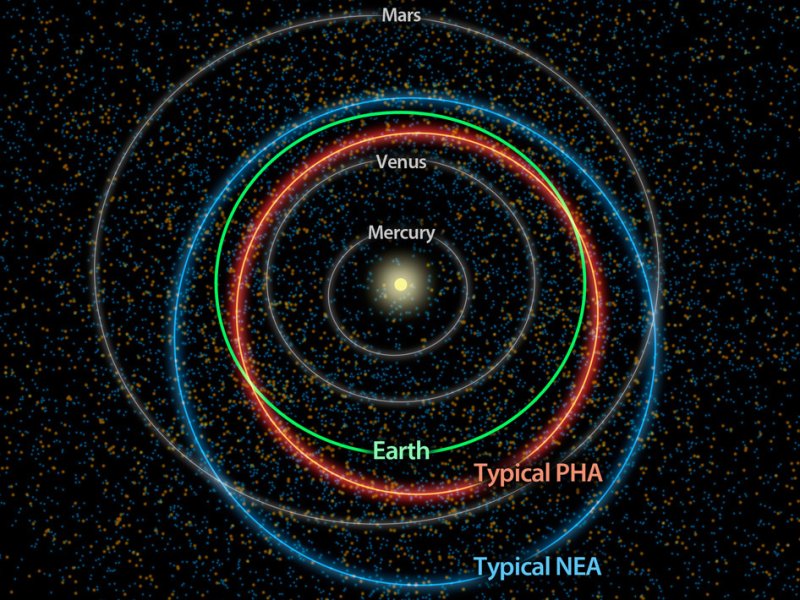This diagram illustrates the differences between orbits of a typical near-Earth asteroid (blue) and a potentially hazardous asteroid, or PHA (orange). Credit: NASA/JPL/Caltech
WASHINGTON, May 16 (UPI) -- A NASA space telescope has completed the best assessment yet of our solar system's population of potentially hazardous asteroids, the space agency said.
Observations from the Wide-field Infrared Survey Explorer (WISE) have revealed new information about the total numbers, origins and the possible dangers the asteroids may pose, NASA reported Wednesday.
Potentially hazardous asteroids, or PHAs, are a subset of the larger group of near-Earth asteroids that have the closest orbits to Earth -- approaching within 5 million miles -- and are big enough to survive passing through Earth's atmosphere and causing damage on a regional, or greater, scale, scientists said.
The results come from the asteroid-hunting portion of the WISE mission called NEOWISE.
"The NEOWISE analysis shows us we've made a good start at finding those objects that truly represent an impact hazard to Earth," said Lindley Johnson of the Near-Earth Object Observation Program at NASA Headquarters in Washington. "But we've many more to find, and it will take a concerted effort during the next couple of decades to find all of them that could do serious damage or be a mission destination in the future."
Findings indicate there are roughly 4,700 PHAs with diameters larger than 330 feet. An estimated 20 percent to 30 percent of these objects have been located and identified.
"NASA's NEOWISE project, which wasn't originally planned as part of WISE, has turned out to be a huge bonus," said Amy Mainzer, NEOWISE principal investigator at NASA's Jet Propulsion Laboratory in Pasadena, Calif.















